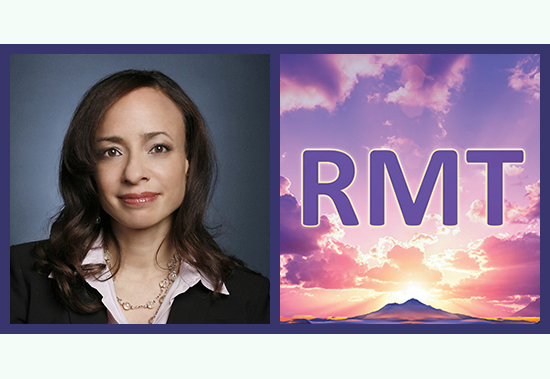Audrey Steele Joins RMT as its President

Audrey Steele was Executive Vice President of Sales Research at FOX for over 20 years, and people know and love her from service on industry committees and day-to-day business. She is a strategic thinker and a great researcher. As Chairman of RMT, I’m thrilled she has become RMT’s President.
I had seven years of collaborating with her as her consultant, and it was always highly productive and fun. I’m looking forward to much more of that.
BILL:Leaving aside my own personal charm, what attracted you to RMT?
AUDREY: Our work together has spanned several projects, but independent of that work, when I was seeking a context-matching solution as a value offering to clients and means of packaging content in linear and streaming, I found that RMT was the only one in the market with a proven link to sales effects. It’s rooted in psychological principles of what motivates viewing and buying, and is closely aligned with work we’d done in neuroscience optimizing the combined effectiveness of ads and content.
You’re plenty charming and inspiring of course, and I’m also excited to work with your esteemed team—Bill McKenna, Skip Cornelius, Josh Chasin, Graeme Hutton, your partners at Wharton Neuroscience, Samba/Semasio, Vividata, et. al. How could I resist?
BILL: From our prior work together measuring real business effects, I feel you may be one of the most experienced media researchers we have in terms of attempting to measure the probable outcome impact of specific program environments. How would you sum up what you’ve learned about impression quality?
AUDREY: Using the best methods to study impression quality was borne of the highly competitive environment in which premium content found itself with the growth of digital pure plays. It was an effort in which the premium sell-side was unified using different approaches, but one that we also found uniquely benefited my former company because of the concentration of its portfolio in high-performing verticals. Ultimately, premium environments excel in delivering value for brands, and all environments can be improved by aligning on factors that influence behavior.
BILL:Did you do better percentage-wise in certain metrics over other metrics?
AUDREY: Yes, given that the ultimate goal for brands is sales, we found the only method that approximated the advantage of premium content over nonpremium as measured by ROAS was neuro. The TV advantage over YouTube for example, was +86% for sales lift per NCS, but only +18% for the average of three of the leading attention companies (TVision, Lumen, and Adelaide).
BILL:So sales lift and neuro are in a class by themselves in being able to properly credit real-world value?
AUDREY: They were in my mind, but I’m convinced by the many third-party validations that RMT is in that top class of sales predictors and is the most efficiently scaleable.
BILL:The business is ripe for a sea-change in focus on measuring value from reach to sales lift; and although that change has been underway for 20 years we’re not even halfway there yet. What would you advise the sell side to do?
AUDREY: Use tools and product offerings that demonstrate sales lift and longer-term brand growth—those are two brand mantras at present. First-year incremental sales is the top priority, and second-year brand growth is becoming #2. RMT’s Value Signals is one such tool that complements advanced targets and can replace them in a cookie-less world whose accuracy is hindered by unreliable data signals. And work with a legend! (Bill, that is)
BILL: (blushes)![]()
BOTH: Happy 2025 to all!
Posted at MediaVillage through the Thought Leadership self-publishing platform.
Click the social buttons to share this story with colleagues and friends.
The opinions expressed here are the author's views and do not necessarily represent the views of MediaVillage.org/MyersBizNet.


